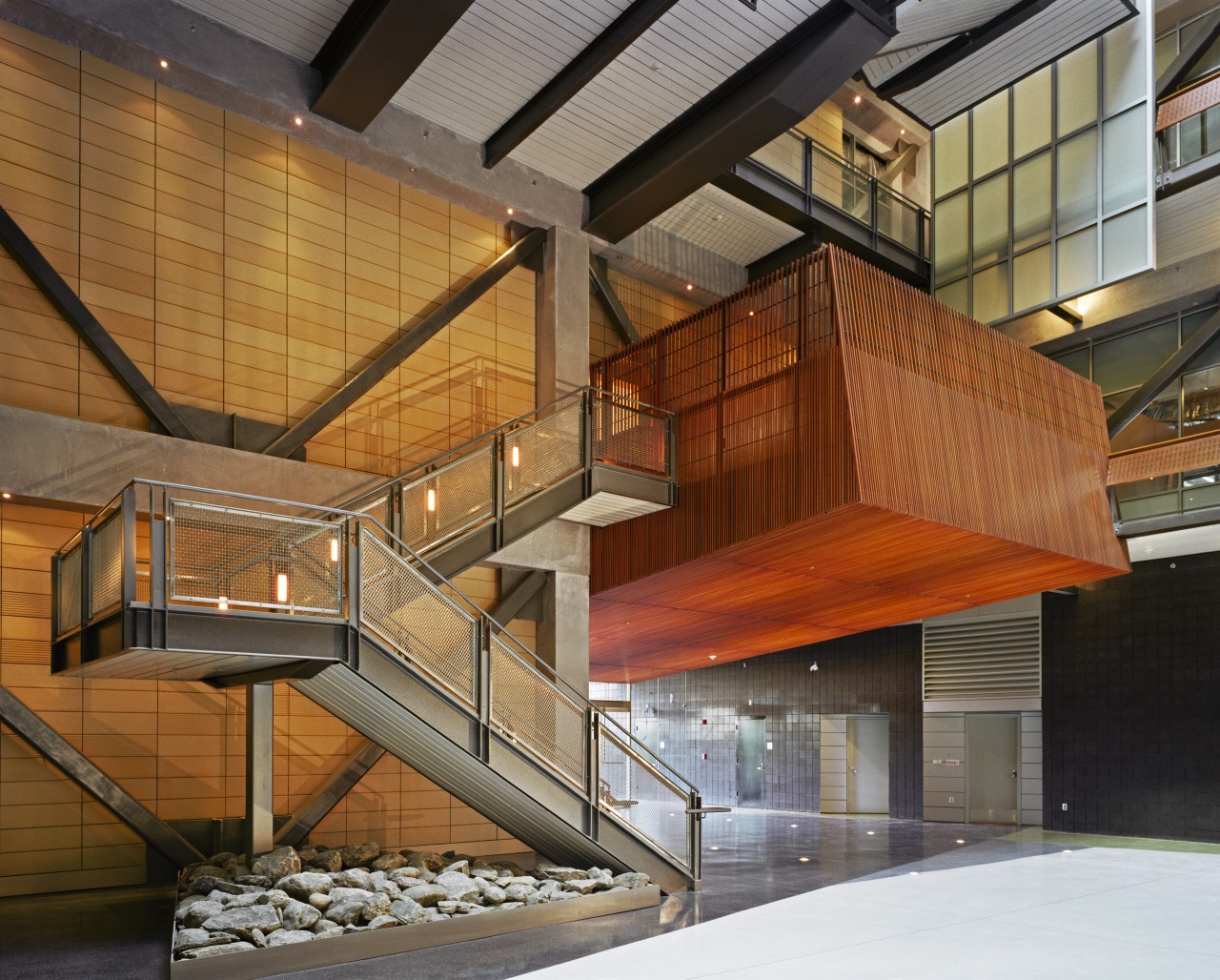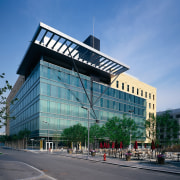Scientific breakthrough
A fresh, open approach to laboratory design has transformed the traditional image of scientists spending long hours in isolation
Exciting work is often conducted behind dull facades. Scientists, for example, have traditionally spent much of their time in solitary endeavour more often than not, cloistered away in a grey, uninspiring public building.
But, as this project shows, it doesn't have to be this way. When Steven Ehrlich Architects was commissioned to design a new biotech research facility, the company took its cue from the nature of a scientist's work.
Architect Steven Ehrlich says he wanted the new Kendall Square Biotech Laboratory to reflect the activity and culture that occurs within.
"The building is located in the heart of the burgeoning biomedical research centre of Cambridge, Massachusetts, and is comprised of medical research laboratories, offices and support services," he says. "Consequently, it was important to develop a design paradigm that would reflect the new biotech technologies, and also relate to the existing fabric of the surrounding architecture."
In keeping with this design philosophy, Ehrlich used DNA as a metaphor for the project's exterior skin. Part of the building's facade features terracotta panels, composed of four different textures of the same colour clay.
"Each texture represents one of the four components that make up a DNA molecule, and the pattern echoes the sequencing of DNA strands," says Ehrlich. "The facade changes character as the light changes at different times of the day."
The terracotta was also chosen to harmonise with the traditional brick architecture of the city, and to contrast the extensive use of channel glass.

"The terracotta panels and channel glass create a lively composition of overlapping planes and cubic mass," says Ehrlich. "The warm earthiness of the terracotta is a counterpoint to the translucent, fluid quality of the channel glass it provides a kinetic counterplay between weight and weightlessness."
To highlight the front facade, the northern elevation is dominated by a 9m canopy, held in place by two non-symmetrical masts constructed by local ship builders. Vertical, charcoal masonry slices through both the north and south facades, expressing the vertical shafts within, and marking the building's entrances.
Inside, the main design priority was the provision of comfortable, light-filled working environments that would encourage staff interaction.
"Scientists are accustomed to working for long hours in isolation in labs and at computer screens, but social interaction and discussion are essential," says Ehrlich. "We wanted to design a building that would foster employee happiness and creativity by encouraging social opportunities."
To provide such an environment, the research labs are organised around a six-storey, 30m-high atrium, which brings light into the core of the building.
"One of the most underused elements of traditional laboratory facilities is the use of natural daylight," says Ehrlich. "Here it is a primary humanising element."
Open walkways, strategic stairways and veiled platforms further animate the interior, providing spaces that encourage and facilitate chance encounters.

To filter light down to the lowest levels of the building, primary circulation corridors are provided on every level of the southern elevation.Ehrlich has also designed enlarged lounges, or "living rooms in the sky," on each floor.
"In addition, there are outdoor terraces under the eaves of the canopies. These extend from a cafe, library and gym, providing park views, and allowing human activity to energise the facade."
Internal materials mimic those on the exterior, with exposed, diagonal, brace frames highlighting the structural system.
Ehrlich says this supports the truth-to-materials approach to the design that the architects considered appropriate for a building that espouses scientific reasoning.
Other materials include stained, clear-sealed Ventwood panels that rise from the entry in a series of folding planes along the elevator core. This lattice-like structure appears to float within the elevator lobbies, providing both seating and canopies. Visually, it is also a warm counterpoint to the steel and concrete, says Ehrlich.
Circulation corridors feature stainless steel mesh, which not only provides a degree of intimacy, but also animates views, creating an interesting veiled effect.
Aluminium storefront systems with laminated glass serve as a secondary veil along corridors, and separate the laboratories and offices from the central space. Clear glass in the middle level of the system allows staff to connect to the activity within the atrium, avoiding a closed-in feeling. The glassed enclosure system also brings additional light into the work areas.
Credit list
Owner
Associate architects
Civil engineer
Lighting designer
Geotechnical consultant
Structural steel frame
Metal and glass curtainwall
Panelised terracotta rainscreen
Louvres
Glazing
Entrance doors
Special door frames
Wood slat ceilings
Panelling
Principal architect
Construction company
Mechanical engineer
Curtainwall consultant
Licensed site professional
Exterior cladding
Channel glass curtainwall
Composite aluminium panels
Roofing
Skylights
Metal doors and frames
Wood doors
Paints and stains
Story by: Trendsideas
Home kitchen bathroom commercial design
Diving into nature
Personality plus
Classic looks, contemporary efficiency











